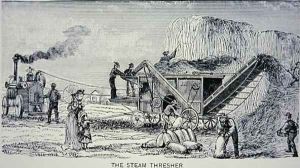W.H. Thayer Paintings
William Henry Thayer, often known as W.H. Thayer, was an American painter who gained recognition in the late 19th and early 20th centuries. Born on August 10, 1859, in Alstead, New Hampshire, Thayer developed an interest in art at an early age and pursued his artistic education at the National Academy of Design in New York City.
After completing his studies, Thayer ventured to Europe, as was customary for many American artists of the time, to further his training and absorb the rich artistic traditions of the Old World. He spent time in Paris, where he was influenced by the works of the French academic painters and the emerging Impressionist movement.
Upon returning to the United States, Thayer settled in New York and began to establish himself as a portrait artist, capturing the likenesses of prominent figures of the era. His style was characterized by a blend of academic realism and a softer, more impressionistic touch, which was well received in his portraits and genre scenes. Thayer's work was exhibited at various institutions, including the National Academy of Design and the Boston Art Club, and he earned a reputation for his skillful representation of his subjects.
In addition to his portrait work, Thayer also engaged in landscape painting, drawing inspiration from the American countryside. His landscapes often reflected a serene, pastoral quality and demonstrated his ability to capture the subtleties of light and atmosphere.
Thayer's contribution to American art was cut short by his untimely death on May 13, 1926, in Pasadena, California. His paintings, while perhaps not as widely recognized as some of his contemporaries, continue to be appreciated for their technical proficiency and the gentle realism that characterizes his artistic output. Thayer's works can be found in various art collections and have been featured in exhibitions that explore the diverse landscape of American art during the turn of the century.
